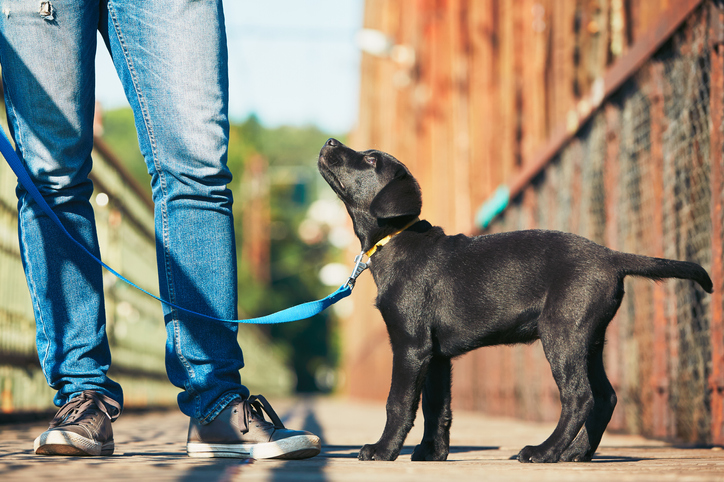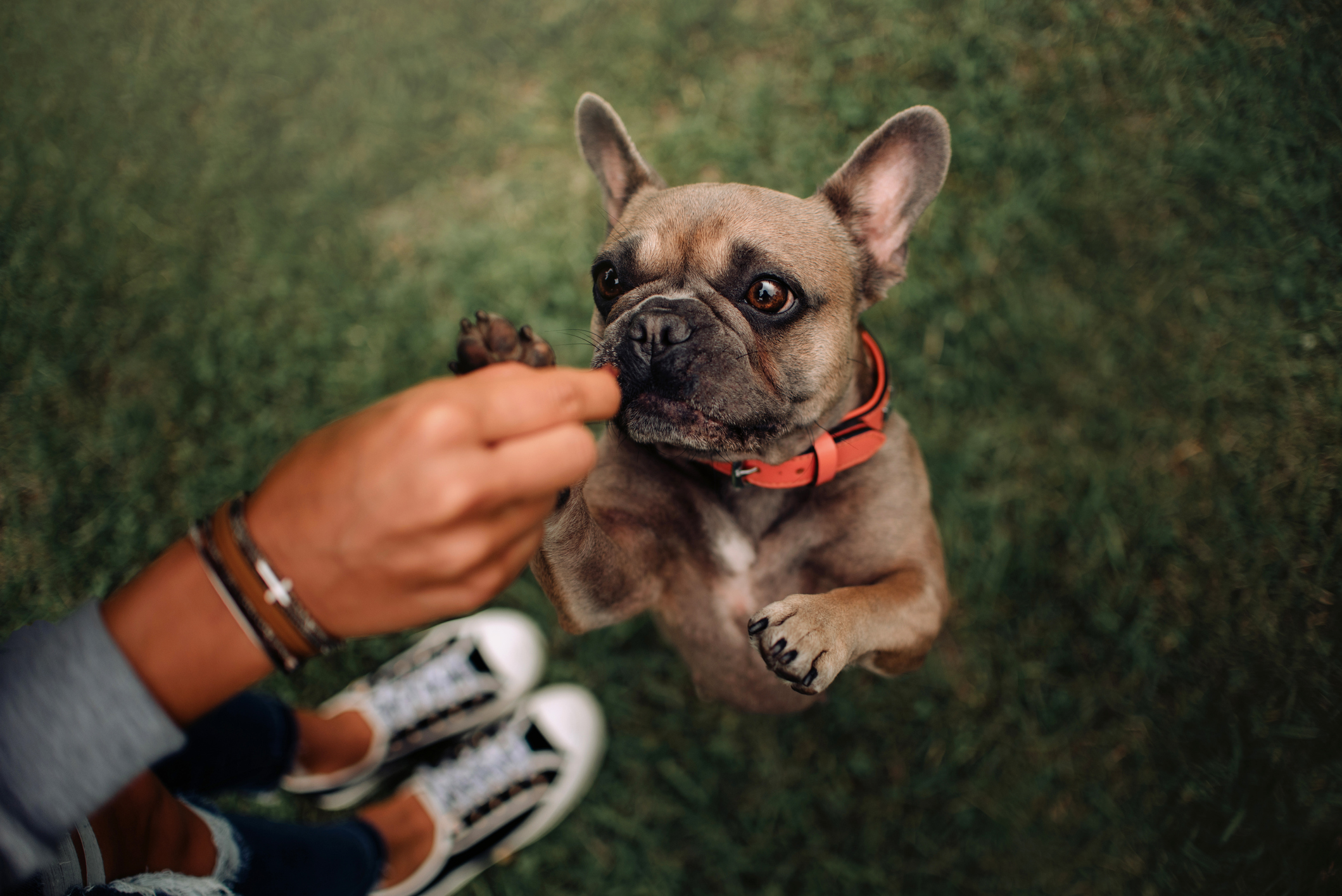Adolescent behaviour in dogs
25th February, 2021

Having a young pup is challenging but a huge amount of fun. Once they’re house trained, sleeping through the night and responding well to your commands, you could think it was time to relax. But think again!
Suddenly your adorable pup begins to ‘act up’ and you could be forgiven for wondering what happened. Unfortunately, you’ve just passed the sweet puppy stage and entered the realm of adolescence. Yes, you guessed it. You now have a furry teenager on your hands!
However, there’s no need to feel gloomy. As with all things doggy-related if you’ve prepared well and stay positive, you’ll be able to ride out any new challenges together.
Read our guide to adolescent behaviour in dogs to help smooth their transition from precious pup to mature adult.
But all the preparation in the world won’t help if you haven’t arranged adequate pet insurance for your treasured teen. Call Purely Pets and make sure you’re covered for any eventuality life throws at you.
Dog adolescence? Really?
Yes, really. Research scientists at Newcastle University have shown typical teenage tendencies don’t just happen to our two-legged family members – they can be seen in dogs, too. Working with the charity Guide Dogs the team studied the normally very obedient Golden Retriever and Labrador breeds. They found dogs were more likely to ignore commands given by their owner and were harder to train at the age of eight months.
This is just around the time the hormonal changes of puberty kick in for dogs. Depending on the individual dog and the breed, this adolescence usually finishes at between 18 months and two years of age. It usually takes larger breeds longer to hit their teenage phase than their smaller counterparts.
Unfortunately, these findings support the experiences of dog rehoming charities. For example, Dogs Trust warns this is one of the most vulnerable times for dogs, with many taken to shelters around this age. As the cute puppy stage ends and owners find they can’t control or train them as they used to, it’s all too common to find dogs put up for adoption.
But as anyone who has had contact with human teenagers knows, this is just a passing phase. Just hang in there if things get tough. After all, a dog has different life stages just as humans do, and as a responsible pet parent, you need to help them through each stage of their life.
Got a question about your teenage dog’s behaviour? If you already have a pet insurance policy from Purely Pets, then remember you also have access to our free 24-Hour Vet Helpline for advice. All calls to the helpline are answered by registered veterinary nurses with a wealth of practical experience.

Signs of adolescence
We’ve all been through adolescence and know this can be a difficult and challenging period in a family’s life. Needless to say, with all the changes going on in their brain and body this can be one of the toughest times in your relationship.
Adolescent dogs are often rowdier, jumpier, and all together more infuriating than at any other time in their life. Tempers can flare and it’ll sometimes feel like they’re testing you at almost any opportunity. Read on to find out just some of the signs of adolescence you could encounter.
Training troubles
Whether toilet training, recall or walking nicely on the lead, owners often find that adolescent dogs seem to have forgotten how to behave. However, this is often not down to simple disobedience. The fact is they have a lot on their minds and this sometimes gets in the way of remembering previous training.
In the wild, dogs of this age would be starting to view the world through the eyes of an independent adult dog. While they’ve been living in our homes for thousands of years, our pets are still subject to the same biological developments.
While we can understand these issues, if a dog is persistently not returning when called, then it can become a danger – to both your pup and other people. Not only could they annoy or worry other dogs, people or animals such as sheep. They might even run into a road and cause an accident or chase wildlife and get lost.
Perhaps use a longer lead when out and about to give them the freedom to explore, but giving you the ability to keep them under control. Remember these changes are likely to only be a temporary setback to their training. Stay positive and you’ll be back to your usual walkies in no time at all.
Social animals
The job of socialising your dog will have been an important part of life with your puppy and this will continue during adolescence. As your dog enters this age, they will probably show an increased interest in playing with other dogs while on their daily walks.
As long as things remain friendly then meeting, greeting and playing with other pooches is perfectly natural and a fun thing for them to do. However, always be on the lookout if things begin to get out of hand and keep control so you can take your dog away if necessary. Perhaps stick to dogs, people and places you are both already familiar with.
Your dog is going through an impressionable period and a negative encounter or worrying situation could badly influence the way your pup sees the world and affect their social interactions in adulthood.
Being around other dogs is an important part of socialisation but can lead to accidents and illnesses requiring a trip to the vets. Having the right pet insurance in place means you don’t have to worry about vet bills if something unexpected happens.
Strong bonds
Particularly for owners who’ve had their dog since they were a puppy, you’ll notice the bonds between you taking shape and getting even stronger. While adolescence has its challenges, remember that you’re going through this together and will be stronger for it.
It’s vital that owners don’t punish their dogs for perceived disobedience or start to pull away from them emotionally at this time. Just as with human teenagers, this often makes any problem behaviour worse.
Being there for them whatever troubles life brings is all part of being a responsible pet owner. Having pet insurance in place to deal with any problems is an essential part of that and shows you truly care.
Anxious times
Just as when they were a very young puppy, even seemingly confident young dogs can become fearful around adolescence. They may even become scared of things that previously didn’t bother them. While you may not want to avoid everything they’re worried about, make sure any exposure is gradual and at a pace they are comfortable with.
Try to avoid potentially stressful events at this time, as a single bad experience at this age could have a lasting effect on their behaviour for the rest of their life.
Hormonal changes
Depending on the breed, a female dog’s first heat will usually start at between six to 15 months of age. The first physical signs you’ll probably notice is a degree of swelling or redness of the vulva, a small amount of clear discharge and some increased licking of the area. You may also notice she needs to urinate more and other dogs begin to take an increased amount of interest in her.
Male dogs don’t have a season like females but will also be going through hormonal changes. As his testosterone levels begin to rise, you may notice behavioural changes including increased aggression. However, these can differ hugely between individual dogs and breeds.
Chewing challenges
While you might think the really tricky teething phase is behind you both, it doesn’t really finish until about seven to nine months old. And the chewing challenges are not over yet, as their teeth will need time to set properly in their gums. Chewing is an important part of this.
Most dogs will remain cheerful chewers throughout their adult life, but with new adult teeth you’ll need to reassess their toys and chewing options. What was suitable for a five-month-old puppy may not be a safe option for your dog’s newer and more powerful jaw.
An unsuitable toy that has been chewed to pieces can be a choking hazard for your four-legged friend. Act soon to prevent a chewing disaster.
If you want to save your furniture and your shoes then you’ll want to invest in some sturdy toys to provide less destructive chewing opportunities. The good news is that chewing is calming for most dogs, so a win-win situation!

Top tips to help you and your adolescent dog
Patience is key
Practising a few deep breaths will go a long way to help you both through dog adolescence. Unfortunately, there are no quick fixes, you just have to hang in there.
Make time for play
Playing with your dog is both great for them and good for your health. It’s often an underused tool in dog training and shouldn’t be ignored. Indeed, an animal behaviour study found dogs performed better at obedience tasks after a play session with their handlers. Great news for owners of tricky teens who enjoy games!
Regular walkies
All dogs need a regular walk but adolescent dogs in particular need to work off some of that excess energy. If you don’t provide enough opportunities for exercise, life at home with a young energetic dog can become testing.
Keep up the training
Training sessions are still vitally important for your dog’s long-term happiness. They are also a good way to keep things fun, novel, and fresh when spending time together. Training classes aren’t just for puppies. Your vet should be able to help you find training classes in your area.
Reassess their diet
During this period, you’ll need to make sure you adjust your dog’s diet to take account of their changing dietary needs. Nutritionally, they still need “puppy” levels of bone-growing nutrients like Calcium and Phosphorous, as well as brain developing nutrients like Omega 3. But because their growth rates have slowed considerably, young adult dogs will need fewer calories.
It is advised to change from a puppy diet to an adult dog diet around one year of age. If you keep feeding a puppy diet into a dog’s second year then you run the risk of creating an overweight dog.
Similarly, if you switch diets too soon, you might not provide them with the essential nutrients necessary for healthy skeletal and brain development. Pet insurance policies from Purely Pets include cover for special diets if your dog needs one.
Discuss neutering with your vet
Neutering is a complex issue and can be controversial, so discussing it with your vet is important. The best age to neuter will vary depending on the sex, breed and size of your dog.
While neutering can be carried out when the dog is very young, some vets will advise waiting until they’re older. This is particularly the case for some female dogs and for male dogs of larger breeds.
Stay positive
Frustrations can easily build up on days when it feels like your well-behaved dog is going ‘off the rails’. Even when times are hard it’s vital to still have lots of fun with your dog, while being patient and consistent with their behaviour.
Passing through the teenage years is something both dogs and humans have to do at some point. But it’s the people around us that can make a big difference to how things turn out.
Protect your pup through the years with Purely Pets
Vet bills can be costly at any age if your pet gets injured or picks up an illness, so it’s best to always have insurance coverage in place.
With pet insurance from Purely Pets you can give your dog the protection they deserve at a level of cover to suit any budget.
Vets’ fees for accidents, illness or both can be covered from between £1,000 and £15,000, depending on the level of cover you choose.
With 15 levels of award-winning lifetime cover on offer, you’ll be sure to find a policy that suits your budget and requirements. Policyholders can also access our online policy management portal, and speak to our knowledgeable insurance team for advice.
Get a quick quote for pet insurance today.
Policy benefits, features and discounts offered may very between insurance schemes or cover selected and are subject to underwriting criteria. Information contained within this article is accurate at the time of publishing but may be subject to change.
Helpful Pages
Recent Posts
Pet Insurance Quote
- 98% claims paid *
- Claims paid directly to vets
- 24/7 vet video consultations
- Interest free monthly payments




